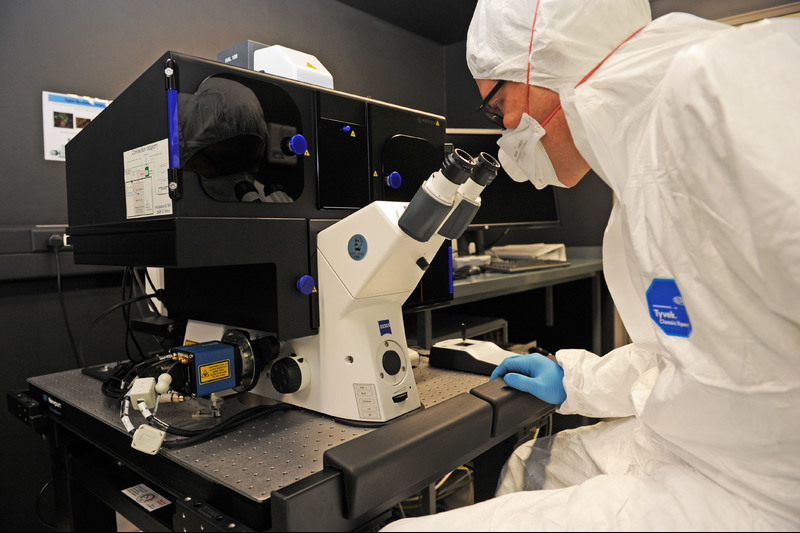Super microscopes to zoom in on TB, HIV/AIDS
02 June 2017 | Story Yusuf Omar. Photo Robyn Walker.
Two new super-resolution microscopes will help researchers take an unprecedentedly close look into the cellular processes that govern diseases like tuberculosis, cancer and HIV/AIDS.
The state-of-the-art, multi-functional Carl Zeiss confocal and super-resolution microscopes are based in UCT’s Confocal and Light Microscope Imaging Facility in the Department of Human Biology and the Institute of Infectious Disease and Molecular Medicine (IDM).
The microscopes will make advanced light microscopy imaging and analysis of cells and tissues possible for the first time, which will aid research into cancer, cell and developmental biology, immunology and infectious diseases. The list of possible applications is long and includes microbiology, neuroscience and plant biotechnology.
“[The microscope’s capability] includes real-time imaging and experimental manipulation of individual, live cells in tissues or small model organisms – crucial to our understanding of how, for example, nerve cells function in health and disease,” said Associate Professor Dirk Lang of the Department of Human Biology and head of the UCT Confocal and Light Microscope Imaging Facility.
Another boon is that the microscopes will enable the facility to offer routine imaging of non-infectious and infectious biological samples (within appropriate safety parameters) on the Faculty of Health Sciences campus.
This will allow UCT and other local researchers unprecedented access to both super-resolution, real-time live-cell and tissue imaging and a multitude of quantitative imaging and analysis techniques.
Understanding key cellular processes
One of the microscopes, the new super-resolution Elyra S1, is the first instrument of its kind in a biosafety level 3 (BSL 3) laboratory in South Africa. It allows imaging of live pathogens implicated in infectious diseases that make a great impact in Africa.
The biosafety level refers to how strict a medical laboratory’s safety requirements are, which depends on the potential danger of the microbes being studied. BSL 3 labs deal with pathogens such as yellow fever and the bacteria that cause tuberculosis. BSL 4 labs have the most stringent safety regulations, as they deal with extremely dangerous pathogens such as the Ebola and Marburg viruses.
“Super-resolution technology housed in a biosafety facility will provide a means of revealing previously inaccessible detail in biological samples that will help researchers in understanding key cellular processes relevant to health issues of national importance, including TB and HIV/AIDS,” says Associate Professor Digby Warner of the IDM.
Funding for the microscopes was received from the National Equipment Programme of the National Research Foundation, the Wellcome Trust, the Wolfson Foundation, UCT and the IDM. The Wellcome Trust’s award includes an assurance for funding to appoint someone with the expertise to give technical advice to users and have oversight of the microscope for five years.
“In combination, these awards have enabled UCT to initiate a programme to develop a world-class imaging platform for infectious and non-infectious material, while ensuring that advanced technologies are maintained in biosafe core laboratories,” Lang and Warner said in a statement.
“Importantly, this process has highlighted the significant benefits inherent in driving multi-disciplinary funding applications within this environment, in this case involving the IDM, Department of Human Biology and Faculty of Health Sciences.”
 This work is licensed under a Creative Commons Attribution-NoDerivatives 4.0 International License.
This work is licensed under a Creative Commons Attribution-NoDerivatives 4.0 International License.
Please view the republishing articles page for more information.










